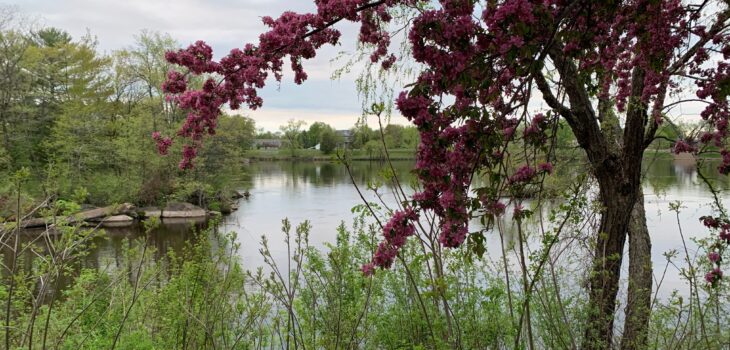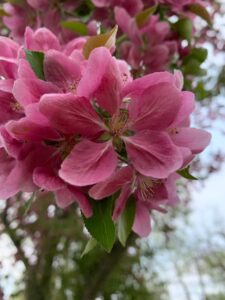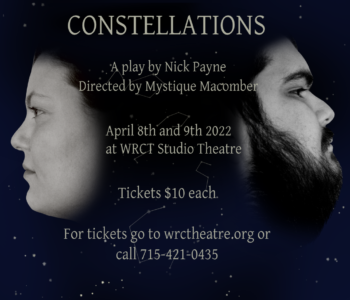
Hopa trees missing from riverbanks but still rooted in…
Seemingly overnight, the leaves popped on all of the trees, and the hopa trees blossomed.
I miss the hopa trees that lined the Wisconsin River.
Pardon me while I sound like an old-timer. I remember when the hopa trees lined the river banks in downtown Wisconsin Rapids, and they were a beautiful sight when they blossomed in spring. The city celebrated the annual Hopa Tree Art Festival each May along the river.

The hopa tree, a type of flowering crabapple tree with pink blossoms, was introduced to the community in the 1960s with the suggestion that the city become “the hopa tree capital of the world.” In fact, more than 4,000 hopa trees were planted across the community in 1965. The festival began the following year and lasted until 1999, according to a Daily Tribune Media story.
The hopa trees were removed when the walking trail was added to the west side of the river. In recent years, the city tried planting a few more, but they still are sparse along the river.
I walked the neighborhood and found fewer than a dozen hopa trees on either side of the river between the Grand Avenue bridge and Belle Island. At one time, they lined the banks, spaced prettily and creating a beautiful springtime display.
Neighborhood hopa trees

In subsequent years, it was possible to order trees and shrubs, including hopas, through a University of Wisconsin Extension program. Each year, I’d get the news release and think I should order hopa trees to plant in my yard, but I never did. Perhaps it was the realization that trees came in bundles of 25. I really didn’t think planting 25 trees in my yard would be a smart thing, even if they were flowering crabapples. I didn’t want an orchard, I just wanted a pretty pink tree.
Instead, I did then what I do now: I walk the neighborhood, pausing underneath canopies of pink to breathe in deeply the sweet, heady scent. I gaze up at delicate blossoms, bursting from bent branches. And I smile, because the hopa trees remain scattered throughout the city. They are a testament to a beautiful community idea from more than 50 years ago.
How to Be a Better Writer Tip
Paraphrasing and quoting
If you use source material, it’s important to give credit to the original source. To use material word for word, you need to put it in quote marks and cite the source. If you choose to paraphrase, you still should give credit to your original source.
In this column, I referenced a Daily Tribune Media story. I paraphrased some content and credited the source with a link to the original article. I left intact the quote about “the hopa tree capital of the world.” Had I used any other directly quoted material from the article, I would have needed to use quote marks.
Paraphrasing helps make the copy your own. You can take out what’s not needed, but you don’t want to change the meaning. You probably have seen examples of content taken out of context. If you pick and choose a few words, you can change the meaning.
That’s dishonest. As a journalist, I embraced the ethics principles we agreed in writing each year to uphold. As a freelance writer and editor, I strive for honesty in my work. That includes quoting material accurately and citing sources.



